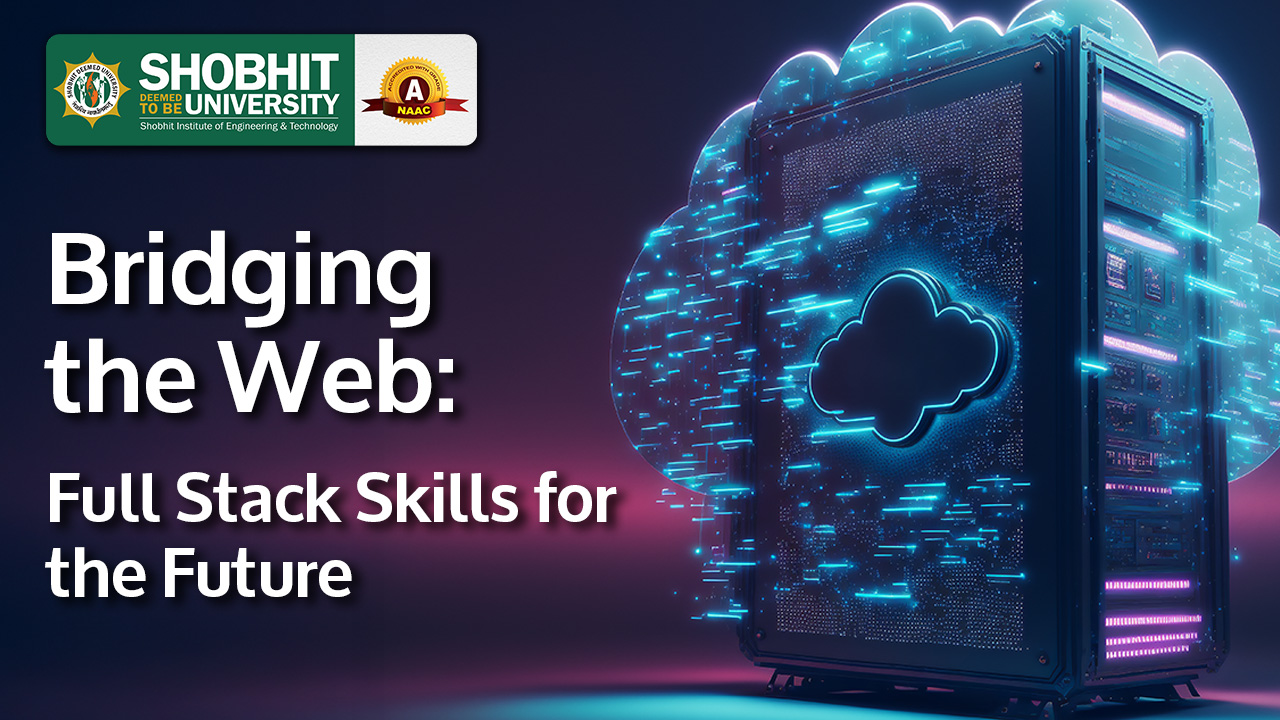
Bridging the Web: Full Stack Skills for the Future
In the fast-evolving world of technology, the ability to build complete, functional, and scalable web applications is more valuable than ever. As businesses shift online and digital solutions become the norm, one role has emerged as a cornerstone of modern software development: the Full Stack Developer.
Welcome to "Bridging the Web: Full Stack Skills for the Future"—your guide to understanding what full stack development is, why it matters, and how to equip yourself with the skills needed for the future of the web.
What is Full Stack Development?
Full Stack Development refers to the end-to-end process of building web applications from user interfaces to server-side logic and database management. A Full Stack Developer is someone who bridges the gap between:
- Front End (What the user sees)
- Back End (What makes the application run)
- Database (Where data is stored and managed)
Why Full Stack Developers are the Future
With technology stacks becoming more integrated and companies seeking agile development, full stack developers offer flexibility and efficiency. Here & why they are in high demand:
Versatility: They can handle both design and logic.
Cost-Effective: One developer, multiple roles.
Better Communication: Understands all parts of a project.
Startup Ready: Ideal for building MVPs and launching products.
The Core Stack: Technologies Every Developer Should Know
1. Frontend (Client Side)
The face of the web—what users interact with.
Languages: HTML, CSS, JavaScript
Frameworks/Libraries: React.js, Angular, Vue.js
Tools: Bootstrap, Tailwind CSS, Sass
2. Backend (Server Side)
The brain of the application (where logic and processing happen.)
Languages: JavaScript (Node.js), Python, Java, PHP
Frameworks: Express.js, Django, Spring Boot, Laravel
Concepts: Routing, Authentication, REST APIs
3. Database Layer
Handles data storage, retrieval, and security.
Relational: MySQL, PostgreSQL
Non-relational (NoSQL): MongoDB, Firebase
ORM Tools: Sequelize, Mongoose, Hibernate
4. DevOps & Deployment H3
Make your application live, scalable, and maintainable.
Version Control: Git, GitHub
Hosting Platforms: Netlify, Vercel (frontend), Heroku, AWS, Render (backend)
CI/CD: GitHub Actions, Jenkins
Learning Path: How to Become a Full Stack Developer H2
1. Master the Basics: HTML, CSS, JavaScript
2. Choose a Frontend Framework: React is a great start
3. Dive into Backend: Start with Node.js + Express
4. Learn Databases: MongoDB or MySQL for data management
5. Connect the Stack: Build full CRUD applications
6. Version Control: Use Git regularly
7. Host and Deploy Projects: Get your work online
8. Practice Projects: Build, break, fix, and repeat!
Real-World Project Ideas
E-commerce Store: Products, cart, payments, admin panel
Event Booking App: Registration, calendar view, payment gateway
Chat Application: Real-time messaging with WebSockets
Full Stack Trends Shaping the Future H2
The web is evolving (and so are full stack skills). Here are some trends shaping the future: Serverless Architecture – Run code without managing servers (e.g., AWS Lambda)
AI-Powered Web Apps – Integrate GPT, image recognition, etc.
Jamstack – Decoupled frontend with APIs and headless CMS
Security First – Devs are expected to know OWASP and secure coding practices
Progressive Web Apps (PWAs) – Fast, installable web experiences
Best Learning Platforms H2
- freeCodeCamp
- The Odin Project
- MDN Web Docs
- Frontend Mentor
- Full Stack Open
Conclusion: Bridging the Future
Being a Full Stack Developer is not just about knowing a set of tools it's about being a bridge between imagination and implementation. You turn wireframes into websites, APIs into features, and databases into user experiences. As the demand for dynamic, scalable, and secure applications rises, Full Stack Developers will remain key to bridging the digital world (layer by layer), stack by stack.
